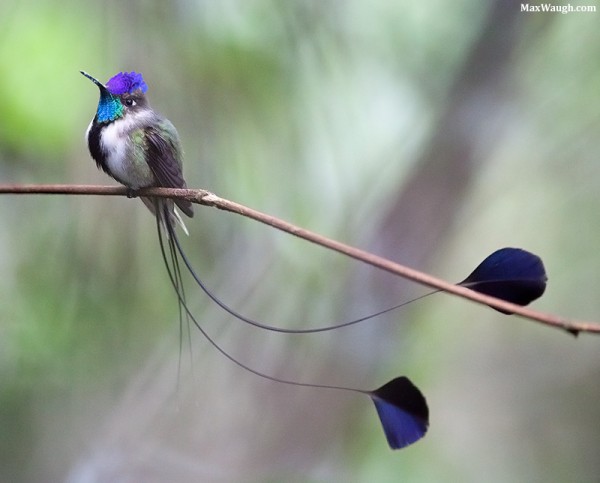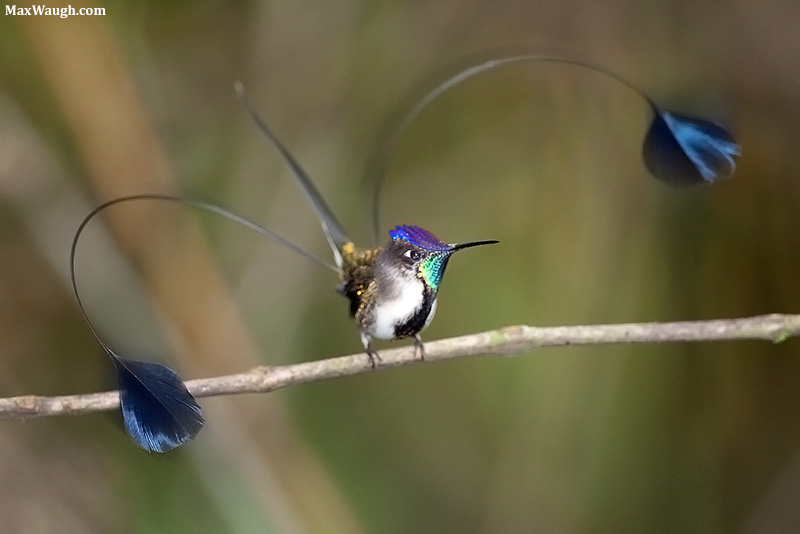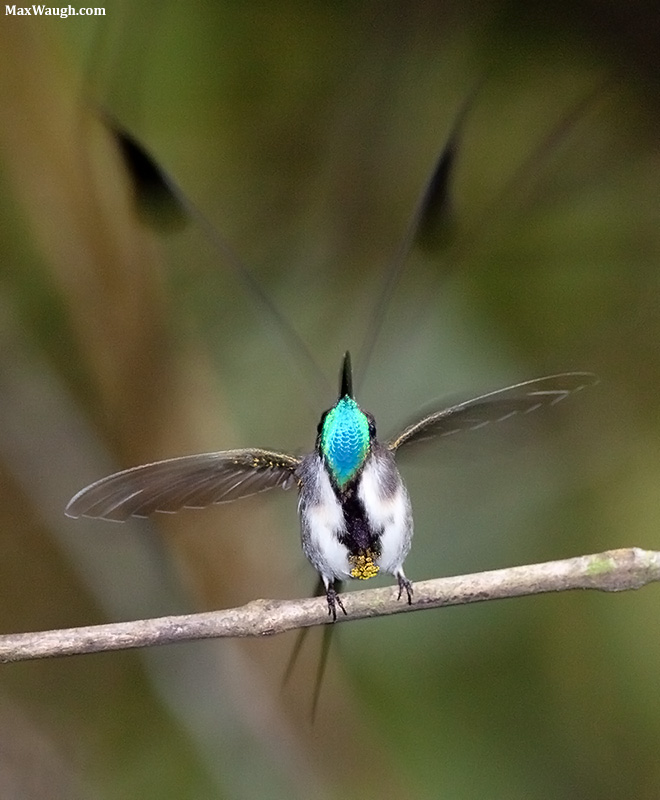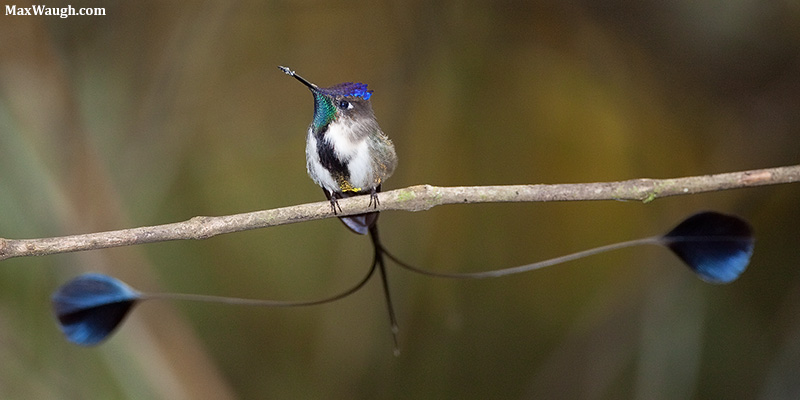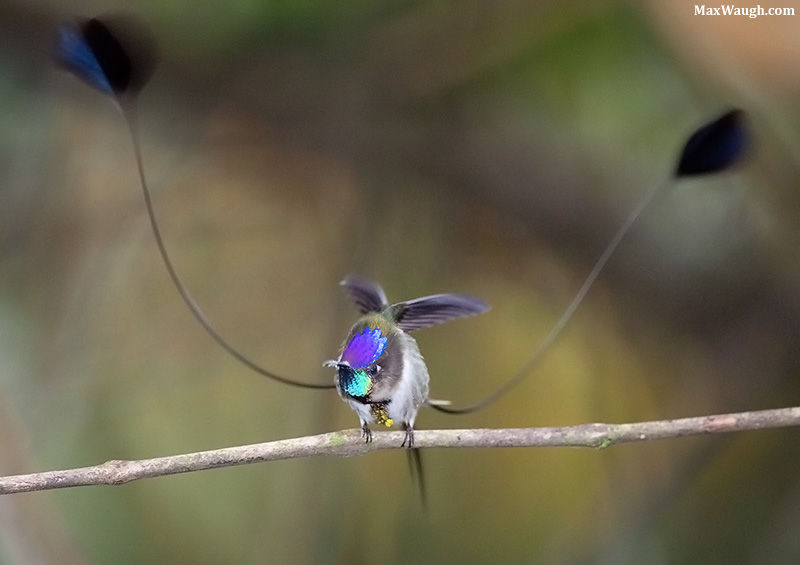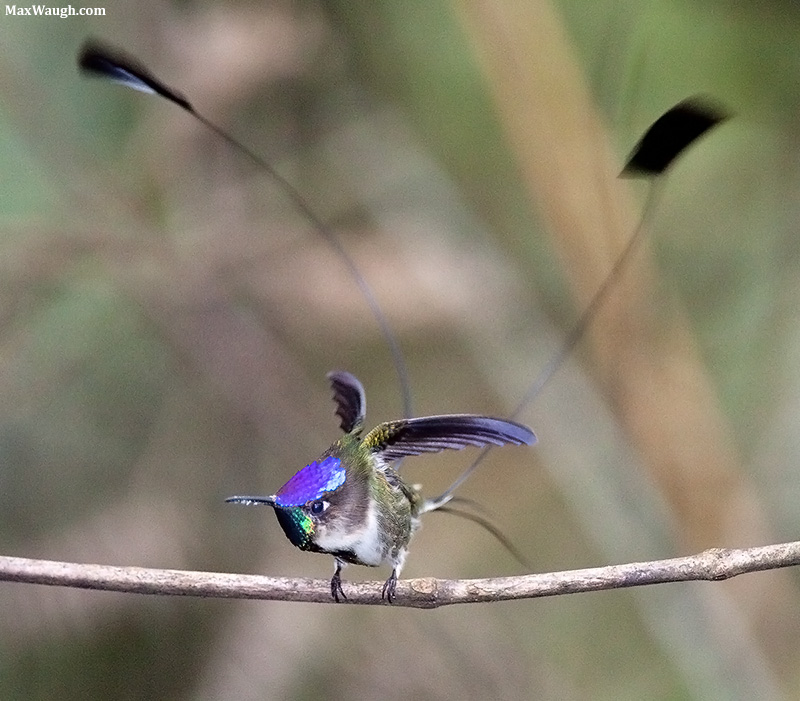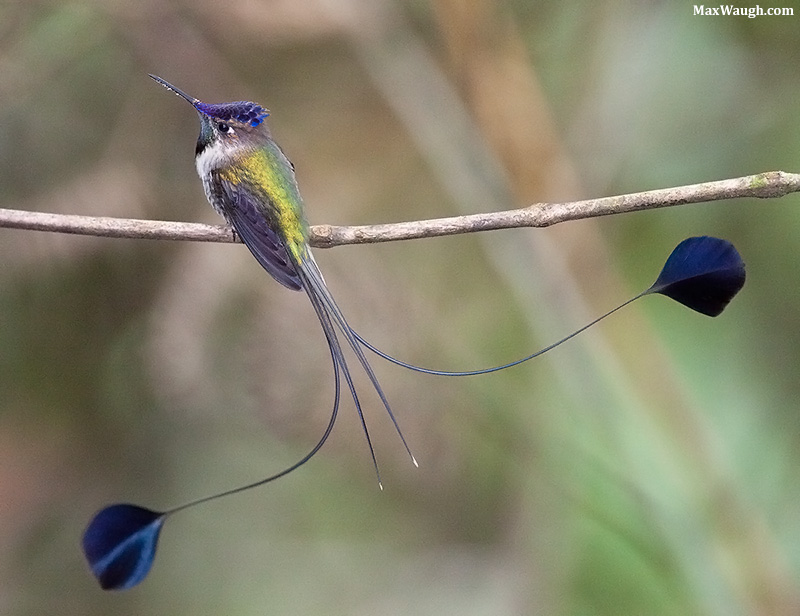This year Kolibri Expeditions started working with the communities of the Amarakaeri Communal Reserve lying just next door to Manu. Going down the Alto Madre de Dios river Manu is to the left and Amarakaeri reserve to the right.
The birding has been just fantastic with birds like Black-faced Cotinga, Rufous-headed Woodpecker and Peruvian Recurvebill as regulars. They have four quite good lodges along the regular Manu route donated by the world bank and USAID and in spite of mostly having shared bath, they are very well built and have all the potential in world to become included in the standard route for birders in the future. BUT they need a partner and this is where Kolibri Expeditions comes in. In 2007 they had only 20 clients visiting the lodges – so they also understand that they need to find a new strategy to get more visitors to their lodges.. Still in 2008 their lodges have mainly remained empty. There are good reasons why birding may be the best way to market this new eco-destination.
1. It should be relatively easy to get volunteers to make complete birdlists and help get the communities focused on providing the essentials for birders, which comes down more to good trails than shower curtains. Volunteer’s please write me (kolibriexp@gmail.com).
2. Birders are less likely to make a fuss about small organizational screw-ups as long as the birds are seen. You can probably appreciate the difficulties in running a lodge set-up where there are no roads, no telephone and no internet! Hard core birders would give the communities more time to sort out the operation without being classified as inferior service and loose out on the market even before they have gotten seriously started. As long as the birders see the birds, they will be mostly happy.
3. Many birders (but certainly not all) would like to spend less money birding in Manu, which has become very expensive in recent years – and thus the community budget alternative is an option. In light of the present economic crises, an inexpensive alternative is always welcome.
4. In spite of this, the community make more money on birders than on back-packers. The back-packers will choose other more streamlined budget operators most of the time, and the only way the community can compete in trying to catch the backpacker group is to lower the prices. The price are low and in the end there are not many backpackers that will chose an alternative that has not all the experience. Birders pay more.
5. Birders are very good at sharing good (and cheap) birding experiences with their friends and on-line. Thus, very soon could the community alternative in Manu become a winner.

Black-faced Cotinga – not uncommon at Blanco Lodge next to Manu Wildlife Center!! Photo: Gunnar Engblom
It is called Amarakaeri Communal reserve, but it is just nextdoor to Manu Wildlife Center and Blanquillo Lodges.
I know! Who shall remember the name of the reserve? Amara….what…
Amarakaeri ….if the indians would have known about marketing they should have called it Manu Community Reserve. Then people would understand that visiting Amara…whatever it is called …what?…yes Amarakaeri Communal Reserve is basically the same as visiting Manu.
It is the same route going down the Manu road and one ends up in Puerto Maldonado (or turn around back to Cusco – or fly from Boca Manu).
During 2008 Kolibri Expeditions made three trips to using all of the four lodges. In spite of the “expected” logistical problems, the birding result was brilliant. We are looking at ways to minimize logistical problems for 2009.
A short summery of the lodges in the Manu drainage.
Shintuya Lodge at the end of the road is just across from Pantiacolla Lodge. Birding along the road is very good passing very stands of Bamboo that has Ornate and Dot-winged Antwren, Yellow-billed Nunbird and hill forest with Red-billed Tyrannulet, Fine-barred Piculet, Military and Blue-headed Macaw, Black-backed Tody-Flycatcher and Cabani´s Spinetail.
Centro de Medicina Tradicional has prime floodplain forest just behind the lodge and good flooded bambo/cane forest on the island in front. There is a mammal-lick, but it is not very well developed for visitors as yet, but may become a resource in the future. Medicine Man/Curandero Matero Iglesias lives here. He performs cleaning rituals for his neighbours and occasional tourists. This is an interesting concept that should be developed as tourism attraction, especially for people staying for longer periods and want to have an insight in traditional medicine. At this point however, it is not very impressive, as the interaction with tourists is mainly an Ayawaska ceremony out of context. It is not really the thing we ought to promote.
“WTF, Go-to-Peru-and-get-High-Tours. Awesome!”
Birdwise some interesting birds have been found in 2008 such as a nest of Ornate-Hawk-Eagle Black-faced cotinga, Rufous-headed Woodpecker, Ocellated Poorwill, Dusky-cheecked Foliage-gleaner and Semi-collared Puffbird.
Charro Lodge is located on a seasonally flooded island halfway down from the airstrip at Boca Manu and the famous Macaw lick at Blanquillo. This is the best Varzea habitat I have seen in the Manu area. Hopefully, it the future we shall be able to have some sort of kayaking programs here in the boreal winter when the waterlevels are high. Birding is very rewarding with key species such as Striolated Puffbird, Peruvian Recurvebill, Long-billed and Amazonian form of Strong-billed Woodcreeper, Red-billied Scythbill, Amzonian and Elusive Antpittas, Rufous-fronted Antthrush, White-cheecked Tody-tyrant and more. Furthermore, the varzea specialties such as Varzea Mourner and Plumbeous Antbird are quite common here.
The last Lodge on the route is Blanco Lodge, which is situated between Manu WildLifeCenter and the Blanquillo Macaw lick. It is thus strategically located for visits to Tapir lick, Otter lake and Macaw lick.
The lodge is the most comfortable of the four lodges as it has private bathrooms with showers,
The birds found here and the nearby bamboo trail with a good stable steel tower include Black-faced Cotinga, Sharpbill, Rufous-headed Woodpecker, White-cheecked Tody-Tyrant, Ash-throated Gnateater and Long-billed Woodcreeper.
Bottomline, the birds are there. There are still many logistical implementations that need to be done, but in the meantime the lodges are open for birders that wanting to save some bucks and still have the best birding of their lives. Long-time staying birders can work out volunteer status deals.
Budget Manu birding tour supporting local communities
For more information write me at kolibriexp@mail.com or check Kolibri Expeditions bird tour page for a budget Manu birding holiday. This trip has a mixture of community lodges and more established lodges, in order not to miss out on any speciality of the area. In spite that the birding tour is 15 days, I would recommend to add a few more days for the cloud forest which deserves more time as well as Amigos Research Center at the end, which is a truly spectacular place.
You heard of Amarakaeri here…..don’t you forget that now!
Gunnar Engblom
www.kolibriexpeditions.com
kolibriexp@gmail.com

